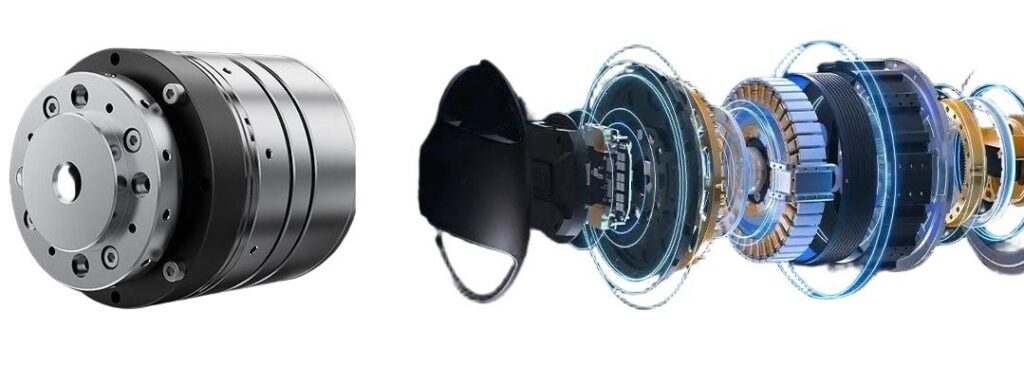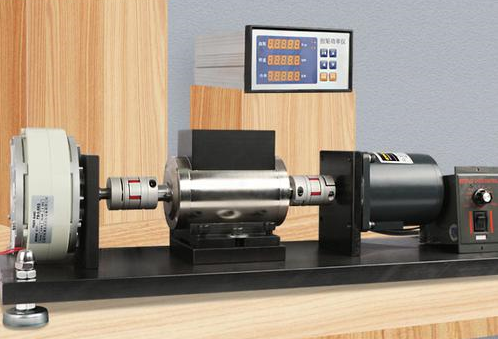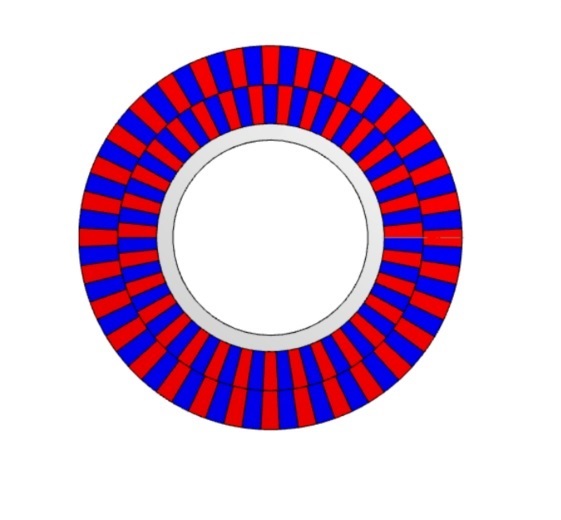
As the core driving component of a robotic arm, the performance of a robotic joint directly determines the precision, reliability, and service life of the entire machine. This article details the full-process testing solution for robotic joint systems, from PCB-level testing to the aging tests of fully assembled units. It covers the verification of multiple performance indicators for leg joint servo drives and high-performance planetary joint motors, ensuring the stable operation of the joint system under various working conditions.
1.1 Component Testing: Joint Servo Drive
The servo drive is the control core of the joint system and must undergo strict production processes and quality inspections. The following are the inspection items for core sub-components:
-
PCB Inspection: Comprehensive check of solder joint quality, circuit connectivity, and component installation.
-
Driver Program Burning: Writing customized control algorithms and parameter configurations.
-
Multiple Functional Tests: Verifying communication interfaces, signal processing, and output control functions.
-
Vibration and Performance Testing: Simulating vibration conditions during transport and use.
-
-40°C to 60°C High/Low Temperature Testing: Assessing component adaptability under extreme temperatures.
-
Pre-assembly Performance Tests: Ensuring all electrical parameters meet design standards.
-
Assembly into Joint Module: Precision assembly into the mechanical structure.
-
Assembly Tests: Verifying the integrity of the mechanical and electrical integration.
-
Aging Test: Continuous operation to assess long-term stability.
-
High-Temperature (70°C) Aging of Joint Module: Real-time software monitoring of operational status.
-
Aging Test using Teach Pendant to Operate Robotic Arm: Simulating real-world work scenarios for durability verification.
1.2 Component Testing: Planetary Joint Motor
The planetary joint motor integrates multiple sub-components such as the motor, driver, encoder, planetary reducer, torque sensor, and temperature sensor.

Performance verification typically includes the following aspects:
| Test Category | Test Item | Test Method and Standard |
|---|---|---|
| Performance Parameters | Torque Capability | Rated Torque 2Nm, Peak Torque 6Nm |
| Speed Indicators | Rated Speed 50rpm | |
| Load Testing | Adaptive Capability | Load adaptive, voltage adaptive |
| Single Arm Rated Load | Gradually increasing load weight plates to test continuous operation capability. | |
| Single Arm Peak Load | Rotating the motor for several revolutions to verify short-term overload capability. | |
| Rated Load Precision | Hanging a 1kg weight under rated load, using a dial indicator to test precision at the same position during arm swing. |
2. System Performance Indicator System
The performance evaluation of the joint system requires comprehensive assessment from multiple dimensions:
Torque Density
-
Motor Performance: Frameless motor design, significantly reducing weight.
-
Reducer Performance: Optimized reducer type and transmission efficiency.
-
Thermal Design: Enhanced overload capacity and heat dissipation performance, ensuring continuous operational stability.
-
Integrated Design: Integrated motor and reducer design, reducing weight and volume.
Response Speed
-
Electrical Response: Measuring the time from command issuance to the motor reaching the target speed and position.
-
Mechanical Response: Evaluating the delay in the joint’s actual movement to the target state, analyzing the impact of transmission system rigidity and load inertia.
-
System Delay: Optimizing sensor feedback speed and control algorithm processing efficiency.
Accuracy Performance
-
Absolute Positioning Accuracy: Assessing the accuracy of the joint reaching the target position.
-
Repeatability Positioning Accuracy: Evaluating consistency in reaching the same position multiple times.
-
Resolution: The minimum motion increment the joint can recognize (Using our precision dual-track magnetic encoder disc with a repetition error of less than 0.025 degrees, significantly improving position recognition accuracy).

Load Capacity
-
Load Performance: Testing the joint’s performance under different loads, including maximum grip strength and load capacity.
-
Limit Test: Linear joint module load test up to 40kg, simultaneously monitoring temperature and noise indicators.
3. System Reliability Verification
Reliability testing ensures long-term stable operation of the joint under various environmental conditions:
-
Temperature Rise Test:
① Measure the motor’s temperature rise under different load conditions to prevent overheating damage.
② Use a dynamometer to test the motor’s peak and ultimate torque while using a thermometer to monitor the temperature of MOSFETs and power components. -
Power Consumption Test: Comprehensive monitoring of the motor’s power changes, including input power, output power, efficiency, and other key indicators.
-
Quietness Test: Optimize operating noise, reducing sound pressure level to below 50 decibels to meet the requirements for use in quiet environments.
-
IP Protection Rating: Verify the sealing performance of the housing to prevent dust and water ingress.
-
Environmental Adaptability: Place the joint in different temperature, humidity, and vibration environments to test its performance changes.
-
Comprehensive Test: Dynamometer testing with torque up to 300 N.M, coupled with a high/low-temperature test chamber to simulate complex working conditions.
-
High Humidity Test: Simulate usage in harsh environments to check the stability and corrosion resistance of its materials and structure.
4. System Aging Test Plan
Aging tests simulate long-term usage conditions to verify product life and durability:
-
Continuous Operation: Continuously monitor the motor’s operating current, power, and speed, checking for abnormal noise, vibration, or other failure precursors.
-
Switch Testing: Assess the motor’s switching performance and durability, including frequent switching and restart capabilities after power loss.
-
Vibration Test: Analyze the motor’s vibration frequency and amplitude, checking for abnormal wear or loosening phenomena.
-
Insulation Resistance: Monitor changes and aging of insulation properties during long-term use to prevent electrical faults.
-
No-load Test: Internally store several sets of motion sequences (each sequence contains several action steps, such as repeated bending, stretching, and other action cycle tests).
-
Repeated Load Testing:
① Test the joint’s fatigue life through repeated loading and unloading.
② After 2 million load cycles, the accuracy degradation rate is less than 0.5%. The encoder system using Opoff’s high-precision magnetic ring performs excellently in this test, maintaining extremely high accuracy stability.
